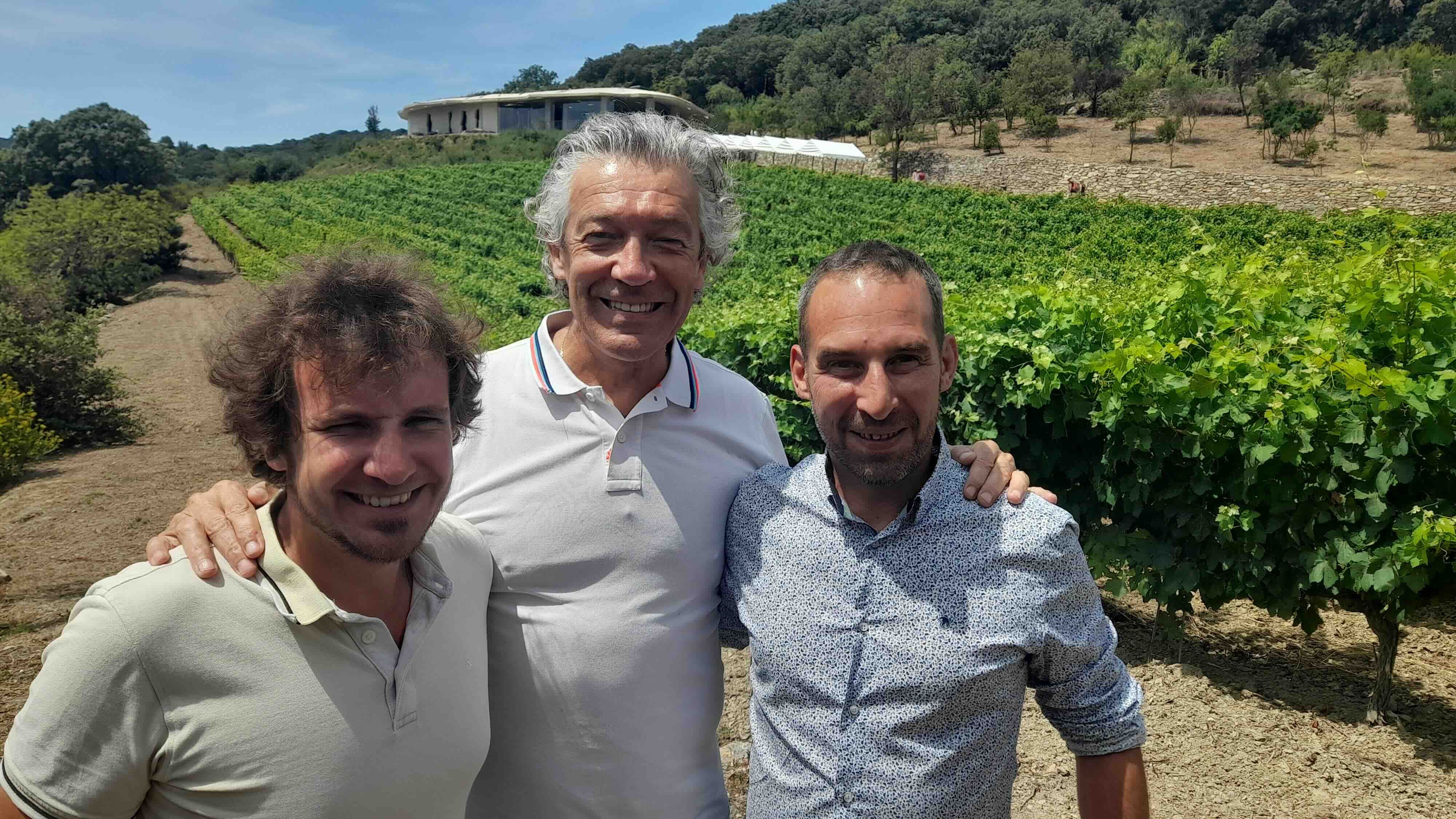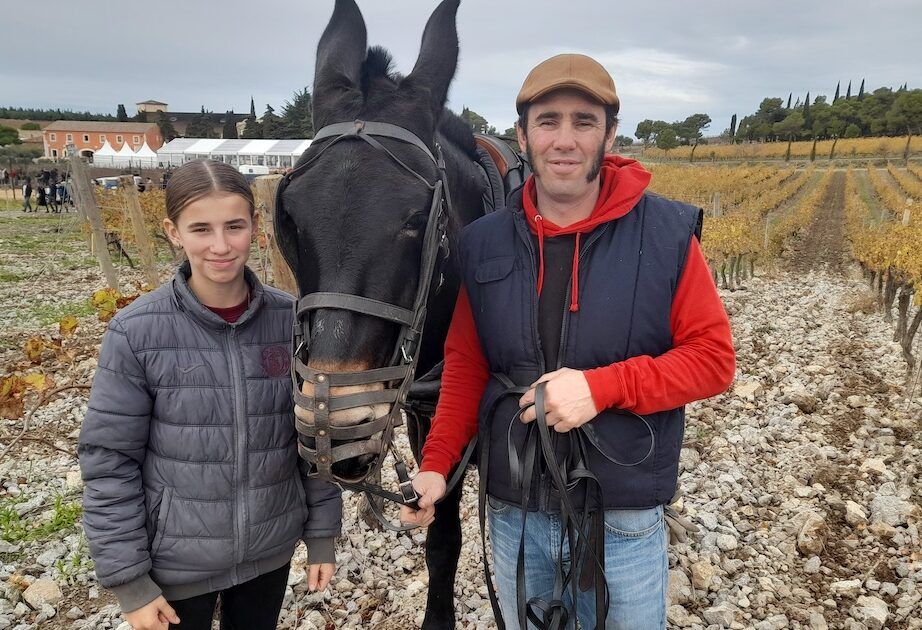Gérard Bertrand, the largest single owner in the world of biodynamically-farmed vines - some 1,000 hectares spread over 17 estates in Languedoc-Roussillon - is one of France’s biggest and most successful wine brands. But the charismatic 59-year old former rugby player from Narbonne is never content to rest on his laurels. While best-known for icon wines such as Clos du Temple, the world’s most expensive Rosé, Bertrand and his team are not slow to miss perceived gaps in the market, and two new labels at the everyday-drinking end of the spectrum are soon to hit UK shores this autumn.
Good names for new labels do, of course, help bottles fly off the shelves. And Bertrand and his marketing team look to have hit on a couple of clever ones in a sparkling vin mousseux range, named the French Cancan, and a trio of super-quaffers (white, red and rosé) aimed at supermarkets called Trouble. The former, named after the popular high-energy music hall dance that dates back to the mid-nineteenth century, would seem the perfect name for a fun bottle of bubbly. There is actually a white, rosé and orange version of this very drinkable tank-method sparkling.
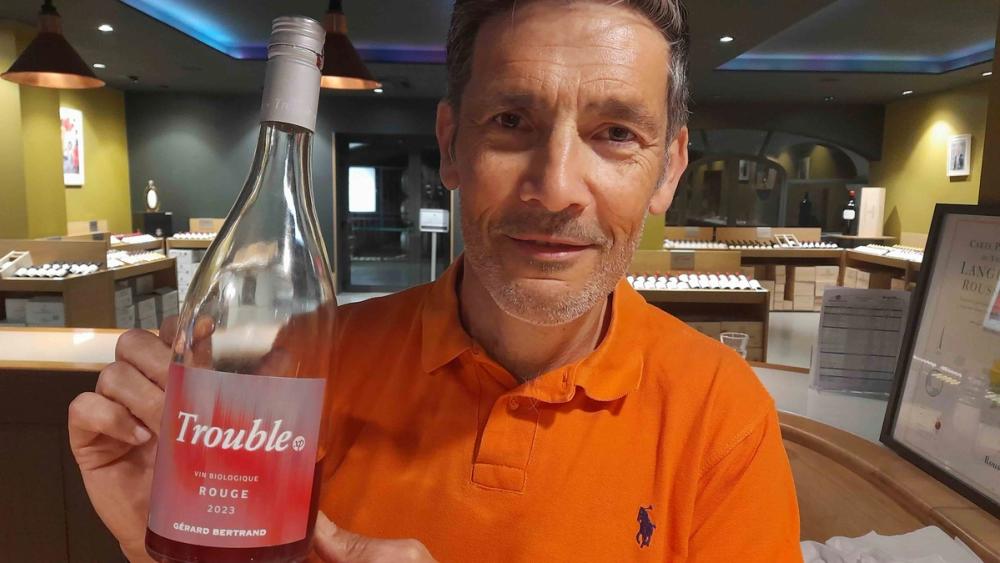
Trouble is intentionally cloudy: Stéphane Queralt, Gérard Bertrand winemaker
First, though, the Trouble range (all 2023 vintage), which sells at €10 at the cellar door. The word in French does not mean what it does in English, instead translated as ‘cloudy’ (if an adjective) or ‘confusion’ (if a noun). Trouble was selected as a name because the range is made deliberately to be cloudy.
“It is cloudy to give a sensation of velvety density,” Stéphane Queralt, the winemaker, told me. “The advantage of Trouble is to have a more fleshy and oily mouthfeel. That also allows the fruit to be conserved longer.”
The white, made up of a third each of Chardonnay, Rolle and Grenache Blanc, underwent neither malolactic fermentation nor filtration. Mango, pineapple, lychee and lime notes made it very appealing. The rosé (60% Syrah, 40% Grenache), which spent only a few minutes on the skins, showed attractive red berry fruit notes and was similarly cloudy. So too the red (60% Grenache, 40% Syrah), which underwent two days of maceration.
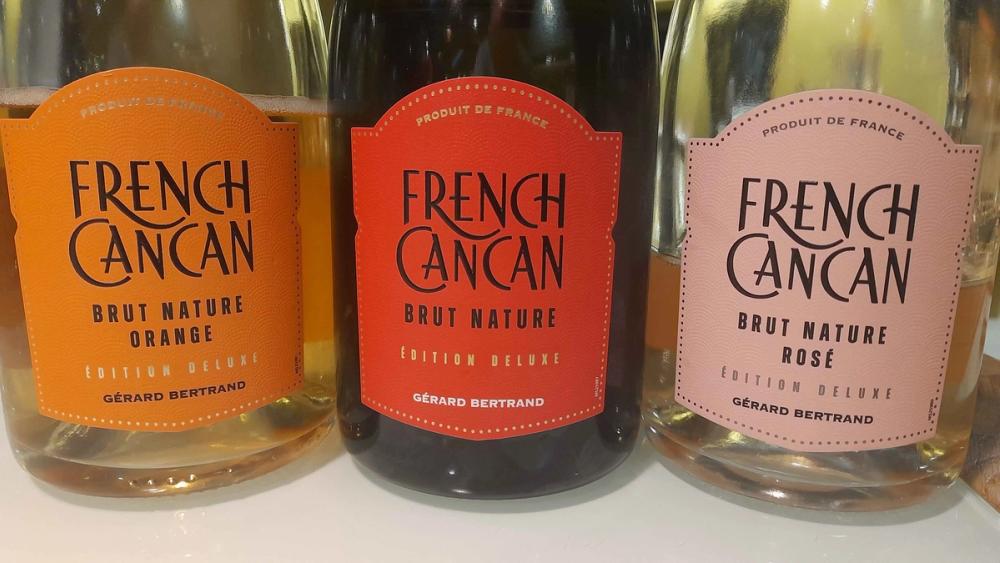
Queralt also made the French Cancan range, all Vins de France wines, which comprises a white, rosé and, with a nod to innovation, an orange. All were produced by the Charmat method and are designed to be easy-drinking and refreshing (cellar door price €19.99). The white, which spent six months on the lees, featured fruit from two different terroirs – Chardonnay and Pinot Noir from high-altitude Limoux, and Grenache Blanc from north-west Languedoc.
“A lot of reserve wine went into this – 15%,” Queralt revealed. “Only liqueur without sugar was added – old Chardonnay from barrel. We did the blend after the second fermentation and went to six bars, although it is five bars in the bottle. The remaining 85% is half Chardonnay, with Pinot Noir 30% and Grenache Blanc 20%. Grapes were picked quite early at the beginning of August which helps the acidity.” Indeed, the wine (pH3.2) showed vibrant freshness and a bright citrus finish as well as appealing richness and brioche notes from the lees contact.
The Cancan Rosé (60% Pinot Noir, 30% Cinsault and 10% Chardonnay) underwent very similar vinification. “The only difference was the amount of reserve wine which was 10%,” Queralt said. “Some wine came from Clos du Temple that didn't go into it. It was bottled last winter. I love the texture.” Also with a pH of 3.2 and just under 12% abv, it showed seductive raspberry fruit.
As for the Cancan orange sparkling, its three varietals (Grenache Blanc 50%, Chardonnay 30% and Viognier 20%), all saw the same skin contact of up to two days. The reserve wine (30%) spent twelve months on the lees. Unusually for a French label, it has a lengthy New World-style tasting note, exclaiming how “its fine bubbles rise gracefully to the surface evoking the lively twirls of the traditional Cancan dance.” Apricot and citrus notes are apparent, nicely balanced by a fresh line of acidity and a hint of salinity.
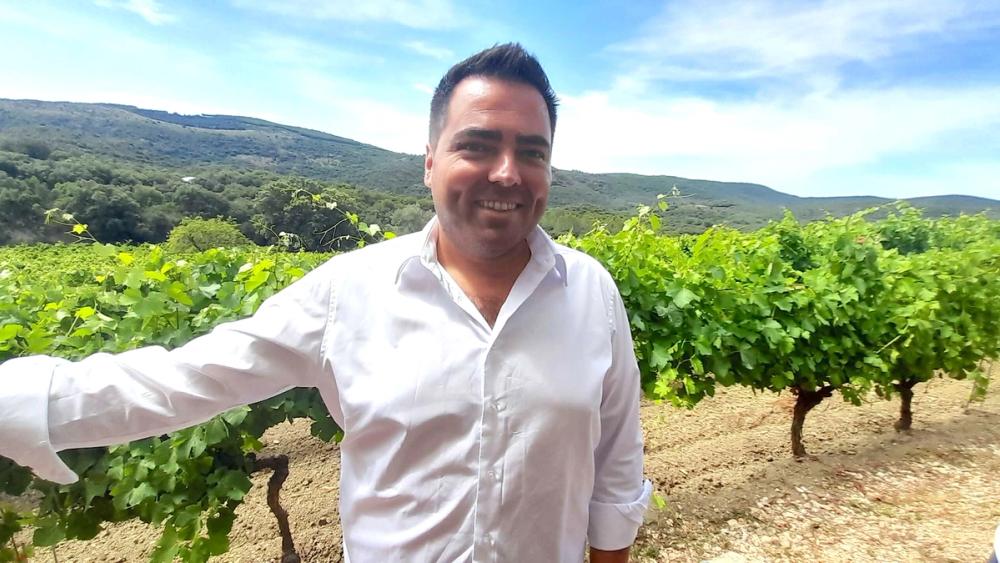
Rosé still has more growth potential in the UK: Clément Carrière-Pradal, international sales director
Clément Carrière-Pradal, Gérard Bertrand’s international sales director, revealed that the company is to launch a new super-premium traditional method sparkling wine at the end of the year.
“It will be a December release to fit in with Cancan,” he said. “It will be called 'Aigle Imperial' – from the Domaine de l’Aigle estate in Limoux from the 2015 vintage. It is top, top quality sparkling wine and will be around £200 retail. It is a blend of majority Chardonnay and Mauzac mainly, with a bit of Pinot Noir. We think sparkling wine is a big opportunity. We don’t do any (traditional method) but it’s a growing category, which is why Gérard has decided to invest in it.”
Carrière-Pradal also believes the Rosé market has further upside for a few more years. “It’s still growing the Rosé market,” he said. “5-10% every year. We haven’t seen the peak yet, especially in the UK, although we have seen it in France. We still have a few years of growth. We have 20 different brands, but we have to make more to satisfy demand. We buy fruit in for our big brands – not of course for our 17 estates, where we only use our own 100% organic fruit.”
With three to five million bottles produced per annum of its own estate wine, and around 35 million bottles of non-estate/ other brand wine, Gérard Bertrand continues its inexorable success story. Neither that growth nor the company’s determination to innovate shows any sign of abating. And with 1000 hectares of certified biodynamic vines under ownership, the company is well ahead of its nearest global pretender, a Chilean concern that has 700.
The wines of Gerard Bertrand are imported and sold in the UK through Bibendum, a part of the C&C Group which is a commercial partner of The Buyer. To discover more about them click here.
